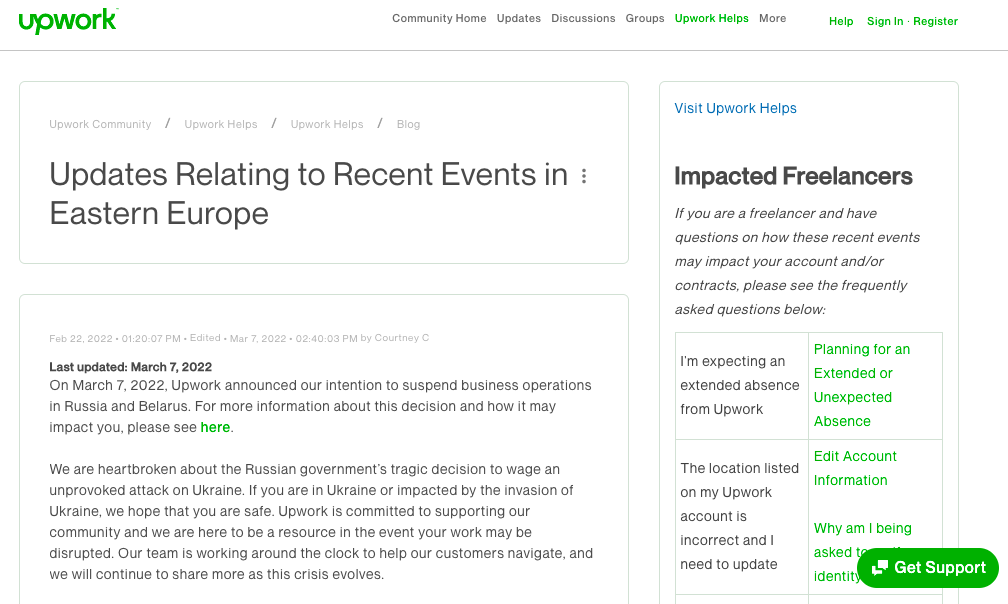A few days ago, one of my friends who works on Upwork shared the following screenshot with me. (I forgot to take the screenshot on smaller device for more readability, you can click or tap the image to see it little more clearly.)

I thought how important it is for some organizations to respond to such times, by sharing the right message at the right time, and without showing any bias or opinion.
Their notice has a link to their Help Center page and that page is quite detailed. Upwork updates this information frequently, and you can see the latest here. (Since you never know what changes over the next few changes, see a screenshot below. Tweet to me if you want to see the long full page screenshot of this Help Center page).

The product content strategy responds
This is a classical example of how product content strategy helps an organization respond to a crisis or to a completely unexpected event. The designers might think that the task involves just adding another container or text block in the page—this is easier said than done.
Think of the Help Center; a new category of Help Topics was required which calls for changes in taxonomy, the information hierarchy for this new category might be specific, the message itself, and how the metadata helped the product team to connect different information types, for example Impacted freelancers. In terms of operations, some new terminology might have been introduced and shared with different teams—in design, support, product content, brand and marketing. They have a message by their CEO as well.
I am sure there is lot more that we cannot see because I did not explore the product for the impact.
The Spotify example—product and content design
In January this year, I saw that #DeleteSpotify was trending on Twitter. I had a reactionary feeling that we need to push some message in the product. I posted it in a Slack workspace and the discussion made me think more about it.

When questioned as to why I think Spotify needs to show anything in the product for this consumer sentiment, my comments in the discussion were:
- “I am not as close to the product to propose something objectively—but some message somewhere as a nudge as a sort of additional information on top of what the users are trying to find or do. I strongly believe in assurance in such times—we need to find ways if the product can match the brand sentiment.”
- “As I said that I am not close to the product even as a consumer, my first and immediate thought as a product person was more of a reactive—it was busy and it needed a validation. So, good that someone in the org validates it. However, if I were not thinking about at all, that is a dangerous sign IMO.”

This is how product content strategists or content designers should work in such situations. It is about our mind at work regardless of whether it leads to some action.
Strategic content always helps
Product content strategy makes sure that the product has the right structure in place for such situations. It means that the message is not fragmented, and there are no last minute fixes and checks across different customer touch points. I am not saying that the message by Upwork was perfect in every sense; I do not even know how they handed it but content strategy can certainly prepare the organizations better for such times. Content design or product content strategy bring preparedness in the product teams, for such situations.
—
This topic is part of my advanced course in product content strategy, content design, and UX Writing. See the course details for how we can find and add more meaning to our work.
